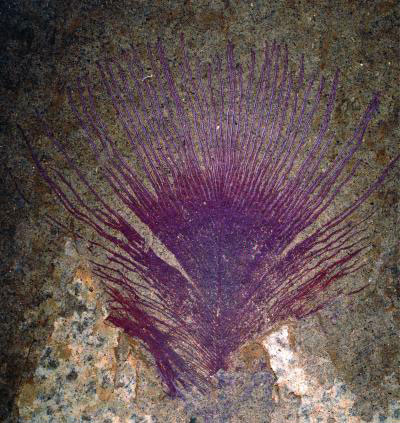Ancient Bird's Feathers Had Iridescent Glow

Nanostructures preserved in feather fossils more than 40 million years old show evidence that those feathers were once vivid and iridescent in color, paleontologists say.
Iridescence is the quality of changing color depending on the angle of observation — it's what makes you see a rainbow in an oil slick.
Many insects, such as butterflies, display iridescent colors on their wings, as do many modern birds on their feathers.
The simplest iridescent feather colors are produced by light scattering off the feather's surface and a smooth surface of melanin pigment granules within the feather protein.
Scientists found smooth layers of these melanin structures, called melanosomes, when they examined feather fossils from the Messel Shale in Germany with an electron microscope.
"These feathers produced a black background with a metallic greenish, bluish or coppery color at certain angles—much like the colors we see in starlings and grackles today," said Richard Prum of Yale University, who was part of the team that studied the fossils.
For more than 25 years, paleontologists had thought these structures in similar feather fossils were bacteria that had digested the feathers at the time they were fossilized. The team had previously discovered that these structures were in fact not bacteria but melanosomes, which then allowed them to document the original color patterns. Following up on the new finding, they are racing to discover what additional coloration features may be found in fossil feathers.
Sign up for the Live Science daily newsletter now
Get the world’s most fascinating discoveries delivered straight to your inbox.
"The discovery of ultra-structural detail in feather fossils opens up remarkable possibilities for the investigation of other features in soft-bodied fossils, like fur and even internal organs" that otherwise are not typically preserved, said study team member Derek Briggs, also of Yale.
The discovery could pave the way for determining color features of other ancient birds and even dinosaurs, the team said.
The new findings are detailed in the Aug. 26 online edition of the journal Biology Letters. The study was funded by the National Science Foundation, the National Geographic Society and Yale University.
- Dino Quiz: Test Your Smarts
- Vote: Avian Ancestors, Dinosaurs That Learned to Fly
- Dinosaur News, Images and Information










